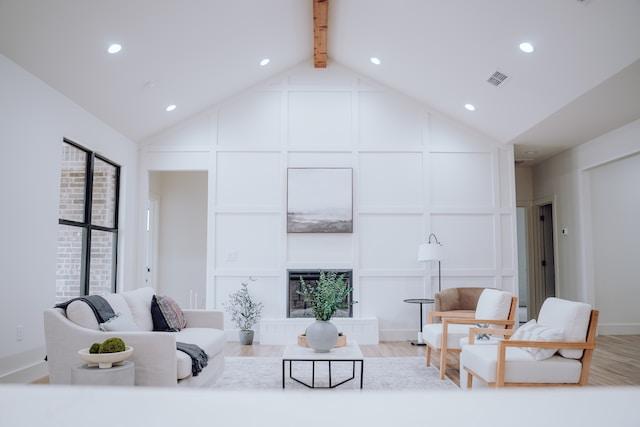


Photo by Bailey Alexander on Unsplash
From the first steps inside a home, textures play a pivotal role in shaping our experiences and reactions to space. They influence not only the aesthetics of a room but also our emotional response to it. Here’s how textures, from walls to wooden floors, significantly influence our living spaces.
Walls serve as the backdrop of our daily lives, silently influencing our moods and perceptions. They can act as bold statement pieces or subtle backgrounds that enhance other design elements. The tactile experience, be it the grainy touch of a stone wall or the coolness of tile, can transport us to different places and eras. For instance, rough plaster can recall rustic Mediterranean villas, while sleek metallic finishes might evoke urban chic vibes.
The colour and texture combinations are limitless, allowing homeowners to craft spaces that resonate with their personal narratives and aspirations. In essence, walls are more than just dividers; they’re storytellers who weave tales of design and emotion.
Nothing quite matches the feel of wooden floors underfoot. Their natural texture provides a sense of warmth, grounding, and authenticity that few materials can replicate. The grains, knots, and variations in wooden flooring add character to a space, making it feel lived-in and genuine. While smooth, polished floors can reflect a refined elegance, more rugged and textured wooden floors can evoke a rustic or vintage charm. Cheap laminate floors will give you plenty of options.
Ceilings, the so-called ‘fifth wall,’ have been underutilized in many design approaches. Yet, they possess a vast potential to redefine a room’s ambience. Incorporating materials like wood or metal can give a rustic or industrial flair, respectively. Additionally, strategically placed lighting, when paired with textured ceilings, can create mesmerizing shadow effects, further elevating the aesthetic appeal.
Patterned tiles or ceiling wallpapers can also introduce unexpected design elements, sparking conversation and admiration. By giving ceilings the attention they deserve, homeowners can unlock a new realm of design possibilities, transforming ordinary rooms into extraordinary spaces.
Furniture not only provides functionality but also introduces a plethora of textures that can influence a room’s ambience. Delicate leathers can add a sense of sophistication, whereas plush cotton throws invite relaxation. The interplay between hard and soft, rough and smooth, contributes to the sensory experience of a space.
For instance, a sleek wooden table juxtaposed with a soft, shaggy rug underneath can marry the best of both worlds. Choosing fabrics and furniture that reflect the desired mood of the room ensures that every touchpoint, be it a sofa cushion or a polished coffee table, contributes to the overall comfort and aesthetic.
Textures - subtle or pronounced - contribute significantly to our sensory experience of a space. They can transport, comfort, and invigorate, creating homes that resonate on a deeply emotional level. As we select materials and finishes for our homes, understanding and harnessing the power of texture can result in spaces that are not only beautiful but also emotionally resonant with you and your home.